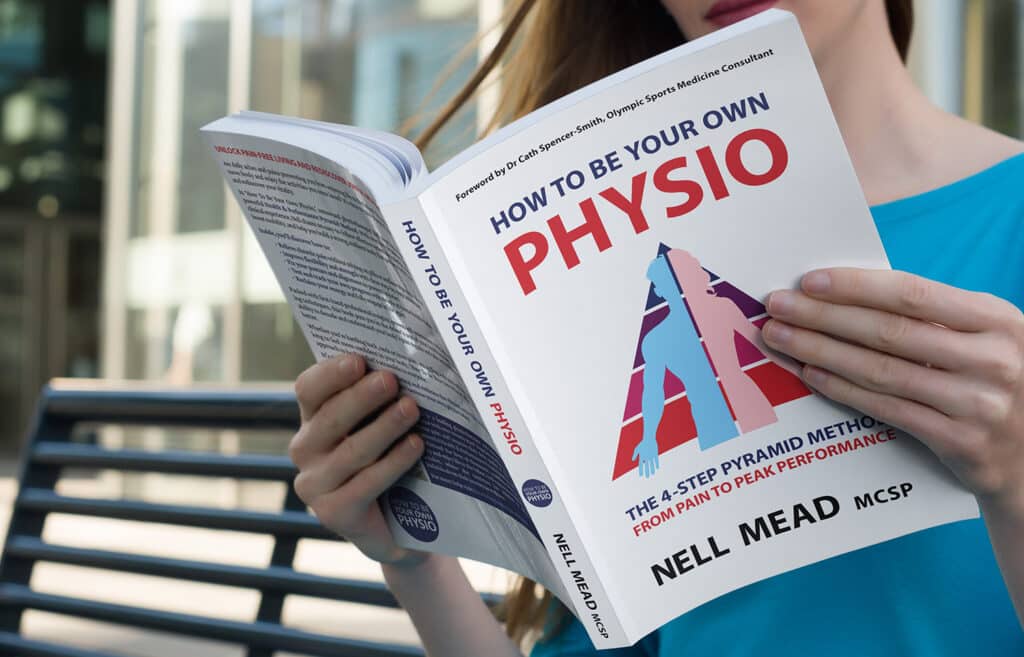The ankle is a complicated area, as it has to provide a hinge (talocrural joint) to propel you forward when walking, while at the same time being able to twist in all directions to allow you to balance and adapt to undulations on the ground.
A joint is where two bones meet. The end of each bone is coated with several layers of cartilage, a slippery living tissue which allows the bones to glide past each other when the joint bends and straightens. The joint is then surrounded by a capsule, which works like a tight bag made of ligament to keep synovial fluid within the joint, as this is how the cartilage remains lubricated and how it gets its nutrition.
In order to feed the cartilage, synovial fluid is pumped back and forth like squeezing a sponge in a bucket of water. The pumping action is produced by movement of the joint, particularly weight-bearing movement (which pumps the nutrients into the cartilage) followed by stretching, which reduces the pressure in the cartilage, thereby sucking waste products out. The stretching also maintains a gap between the bones, which allows the ends to slide over each other freely and not get stuck or develop wear points.
There are many reasons for stiffness and pain in the ankle: traumatic reasons such as fractures and sprains, overuse/misuse reasons such as excessive walking or running on poorly aligned feet or old shoes, underuse reasons such as sitting still for long periods. The effect of all of these potential causes is that the soft tissues of the ligaments and ankle joint capsule gradually shorten, thus reducing the size of the gap between the tibia and talus bones (the joint space).
Why is this a problem?
When the joint space is reduced, you lose a proportion of not only the big movements of the ankle that you can produce with your muscles (these are known as physiological movements and include pointing your toes and rotating your ankle) but also the accessory movements — in other words the ability of the tibia to slide back and forth on the talus, the in-and-out movement of the subtalar joint and the ability of the fibula to glide back and forth on the outside of the tibia. You can’t produce these movements with your muscles, but they help your feet and ankles to “roll with the punches” when you move over undulating ground and enable your joints to achieve end-range motion. Accessory movements are really difficult to treat by yourself, so this is a good reason for seeing a manual therapist such as a physiotherapist or osteopath, who can mobilise the joints in this way for you.
The other movements the ankle produces are the physiological movements: plantarflexion (pointing toes downwards like a ballet dancer), dorsiflexion (pulling toes up towards you like Mary Poppins), and inversion (twisting the sole of the foot inwards towards your groin) and eversion (twisting the sole of your foot outwards). These are movements you can — and should — practise yourself, in order to stretch the joint capsule and ligaments, and thus to feed the capsule, ligaments and cartilage and maintain good joint health.
Apart from ligamentous and capsular tightness, another factor that can cause stiffness at the ankle is muscular tightness and imbalance. Tight calf muscles restrict dorsiflexion as they are unable to “pay out”. Tight peroneal (outer calf) muscles restrict inversion. Keeping these muscles strong and flexible will also help to maintain joint health and reduce the likelihood of future injury.
Finally, one of the major functions of the ankle joint is that of proprioception: neural transmitters in and around the joint respond to movement and send signals to your brain, telling you where the ankle is and how well you are balanced on it. The better the proprioceptors are functioning, the more effectively the muscles can function to stabilise the ankle joint.
Over the next two weeks, I’ll be writing about what you can do to help yourself if you have a recent traumatic ankle injury — and then about what to do if you have a chronic ankle problem, whether that’s from an old trauma, or from the overuse/misuse/underuse cycle… or, if you already know your injury is complex and that you need quality professional help, why not call us on 0207 175 0150 and book a physio assessment?







